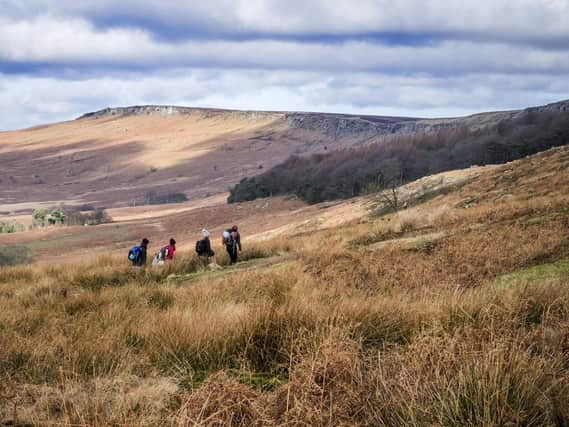Plants can share nutrients, Yorkshire scientists discover in new grassland study


Scientists in Sheffield, curious as to how so many different kinds of plants are able to grow in low nutrient areas, have been carrying out tests to see how they thrive.
The answer, it seems, is that the plantlife is able to share, by each taking what it needs in a different form. The findings, say experts, could answer a question which has puzzled scientists for years, as well as ensuring their conservation, and improve people’s wellbeing.
Advertisement
Hide AdAdvertisement
Hide Ad“Our research answers the global question of how we get very high levels of plant species biodiversity, especially in ecosystems with very low amounts of soil phosphorus,” said Prof Gareth Phoenix, inset, from the University of Sheffield, who led the study.


“By helping to understand how we get high levels of biodiversity, we can also better protect ecosystems and conserve their biodiversity.
“People like being out in landscapes full of a diversity of plants, and you don’t need to know what all the different plants are to get the benefit of being surrounded by lots of different plants.”
Research
A team of scientists, based at the University of Sheffield, has been carrying out the research using grasslands from the Peak District.
Advertisement
Hide AdAdvertisement
Hide AdThey used grasses, sedges and flowers which are more commonly found, from bird’s-foot trefoil to sorrel and ribwort plantain, as well as blue sedge and sheep’s fescue.
They wanted to test an ecosystem which was thriving with a high diversity, despite being low in the key nutrient phosphorus, with is essential for plant growth.
Using soil taken from the limestone grasslands of the Peak District, they were able to see how ecosystems can grow when different plants are competing for the same food.
And by injecting different types of phosphorus into the soil, they could then track which plants took up which type of nutrient.
Advertisement
Hide AdAdvertisement
Hide AdTheir findings show that the plants were able to share out the phosphorus by each preferring to take it up in a different form, in a practice known as ‘‘resource partitioning’’.
“Globally, ecosystems where phosphorus is in short supply are often the most biodiverse and have higher numbers of rare species,” said Prof Phoenix.
“Luckily enough, we have exactly this on our doorstep in our Peak District limestone grasslands.
“The plants had different preferences for the various phosphorus compounds.”
Findings
Advertisement
Hide AdAdvertisement
Hide AdSome showed greater uptake from an ‘inorganic phosphorus’ form, the scientists explained, while some preferred to use a mineral bound phosphorus compounds such as calcium phosphate, and still others were better at using the organic compound DNA.
“Critically, this means the plants can co-exist because they are using different chemical forms of phosphorus in the soil.
"In other words, they are sharing the phosphorus.”
The research, which has been published in Nature Plants, used different radioactive compounds to trace the phosporus from the soil into the plants.
With such tiny amounts needed, the team from the University of Sheffield’s department of animal and plant sciences, could look at the natural behaviour of the plants, in their own soil, as
they could in nature.
The published work, Niche differentiation and plasticity in soil phosphorus acquisition among co-occurring plants, was funded by the Natural Environment Research Council.